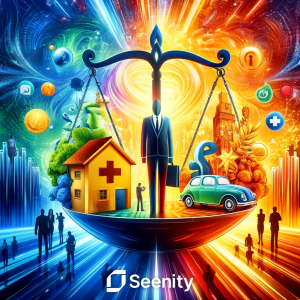The most important thing about risk assessment models is what feeds them: the information. And like every stage-based process, the planning and investigation is the most critical stage. As they often say, “Understand the challenge or problem, and you’ve already solved most of it”. The investigation stage, long before drawing far-reaching conclusions, involves many steps, with the first and perhaps most important being the collection of information, its organization, and its presentation. Sounds simple enough? Not always.
Exporting information for investigation is a stage in itself and requires an understanding of the environment and the platform from which the data is derived. Often, especially in traditional and established companies, the information is spread across multiple systems. Just by asking the important question of how to obtain the information accurately and correctly, you open the door to a complex world. Tools are needed for this. Tools that know how to export correctly, to save, and to index.
The key is to obtain representative information that, after investigation, is clear to everyone from a scientific standpoint and beyond. Sometimes flaws are discovered early-on during the information investigation. It’s important to highlight them, but it’s even more essential not to address them at this stage but rather at the stage where the entire process pathway is implemented. Sometimes we tend to get stuck on one discovery or another, and then the truly important process becomes stalled. At this stage, Seenity offers a dashboard with relevant information for everyone: the number of lists, amounts of money, logical and illogical data, and more. While this stage is preliminary, it is critical to the continuation of the process and is executed using the Big Data tool – SOTA.
Once the technical issue of obtaining and organizing the information has been resolved, we begin the next critical stage known professionally as Data Engineering, which inevitably leads us to Feature Engineering. This is where the wisdom of experience comes into play. There are very important fields that need to be thoroughly prepared for data collection and modeling. The whole idea of data transformation is expressed at this stage, but there’s a need to understand the use case we are dealing with and the risk factors affecting the risk assessment. For example, weather data in car insurance risk assessment is important, very important even, but much less so than data on the vehicle’s safety features and accident prevention mechanisms.
Our experience as a company dealing with millions of records that feed the risk assessment model in the standard insurance world is invaluable. Sometimes a piece of data reflects human behavior, even if it’s just a calculated date. And yes, not every piece of data in the sea of information generated daily due to the scientific revolution is indeed relevant. At times, additional data may ultimately bias the model. At Seenity, we believe in a very important principle: any data that has its time and place might be relevant. And yes, philosophically, there’s no information in the world without its time and place because everything in the world happens and exists at a specific time and place. The only question is whether it was properly preserved along the way and can indeed be used.
Building the first model, upon which the entire Seenity process relies (its enrichment, real-time updates, and using it for prediction) – is a complex and powerful process utilized through Seenity’s wonderful platform. In a short period of time, you can get a good perspective on the company’s data, and moreover, quickly understand how to construct a risk estimation model that will lead to better results.


